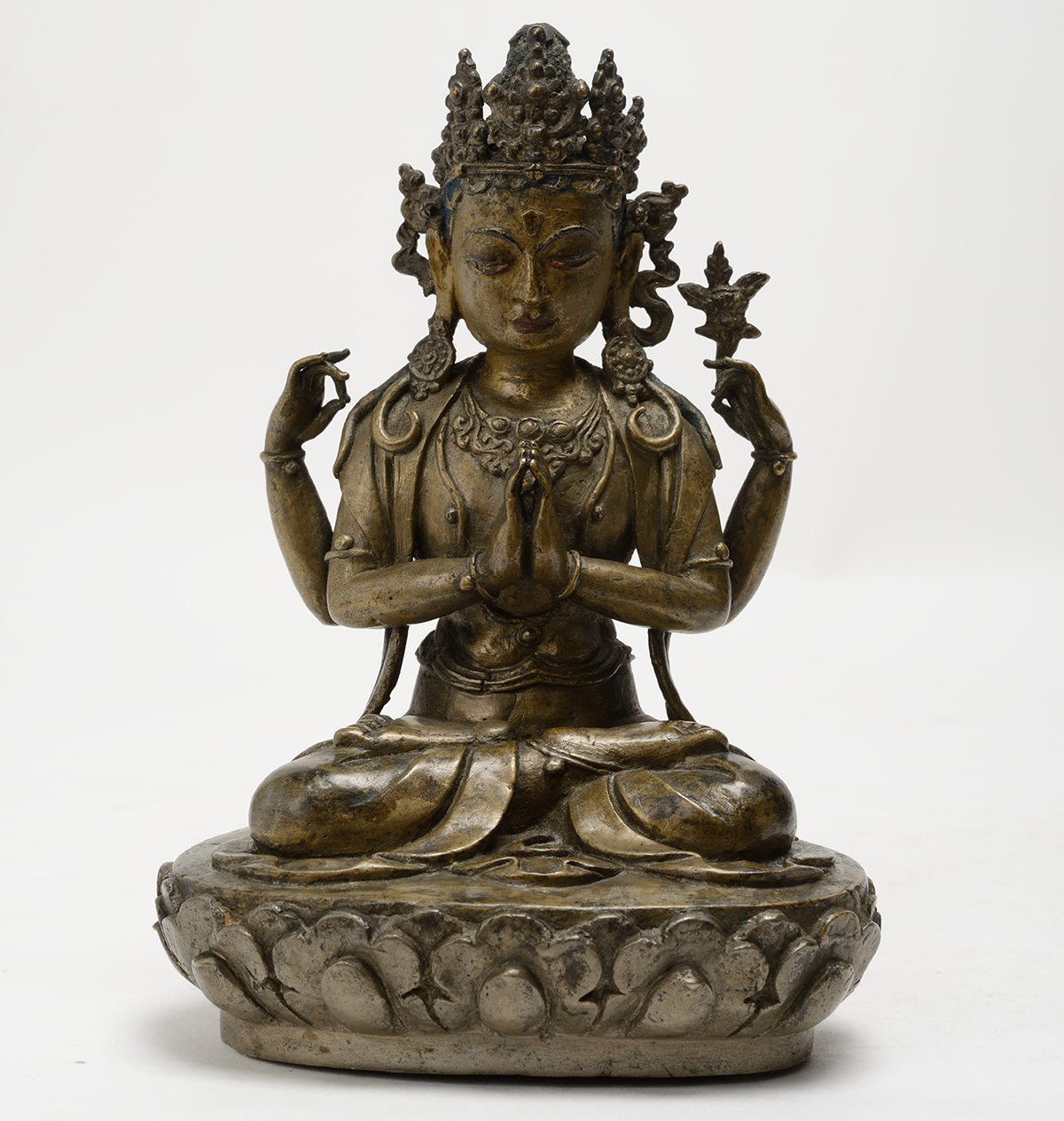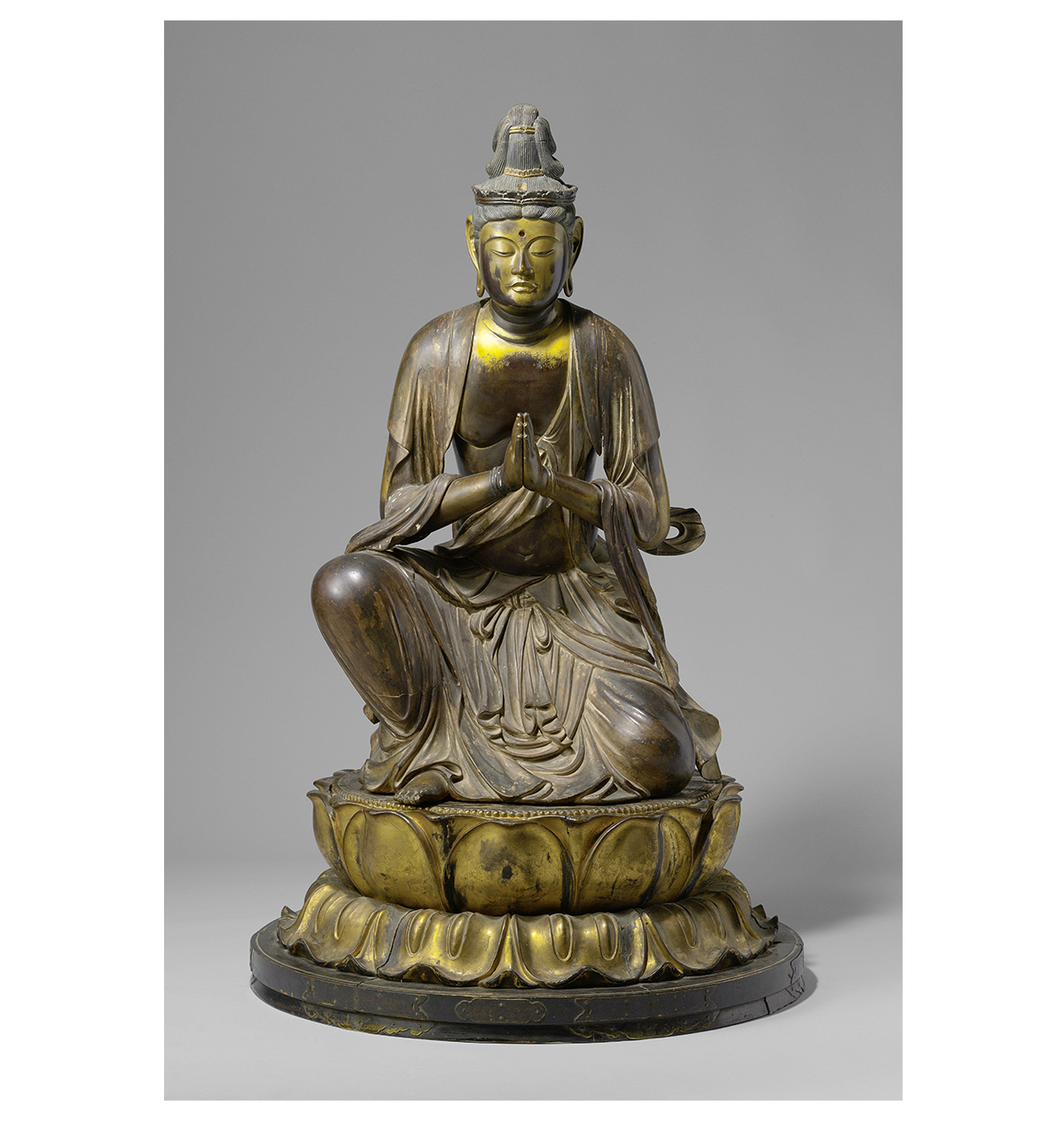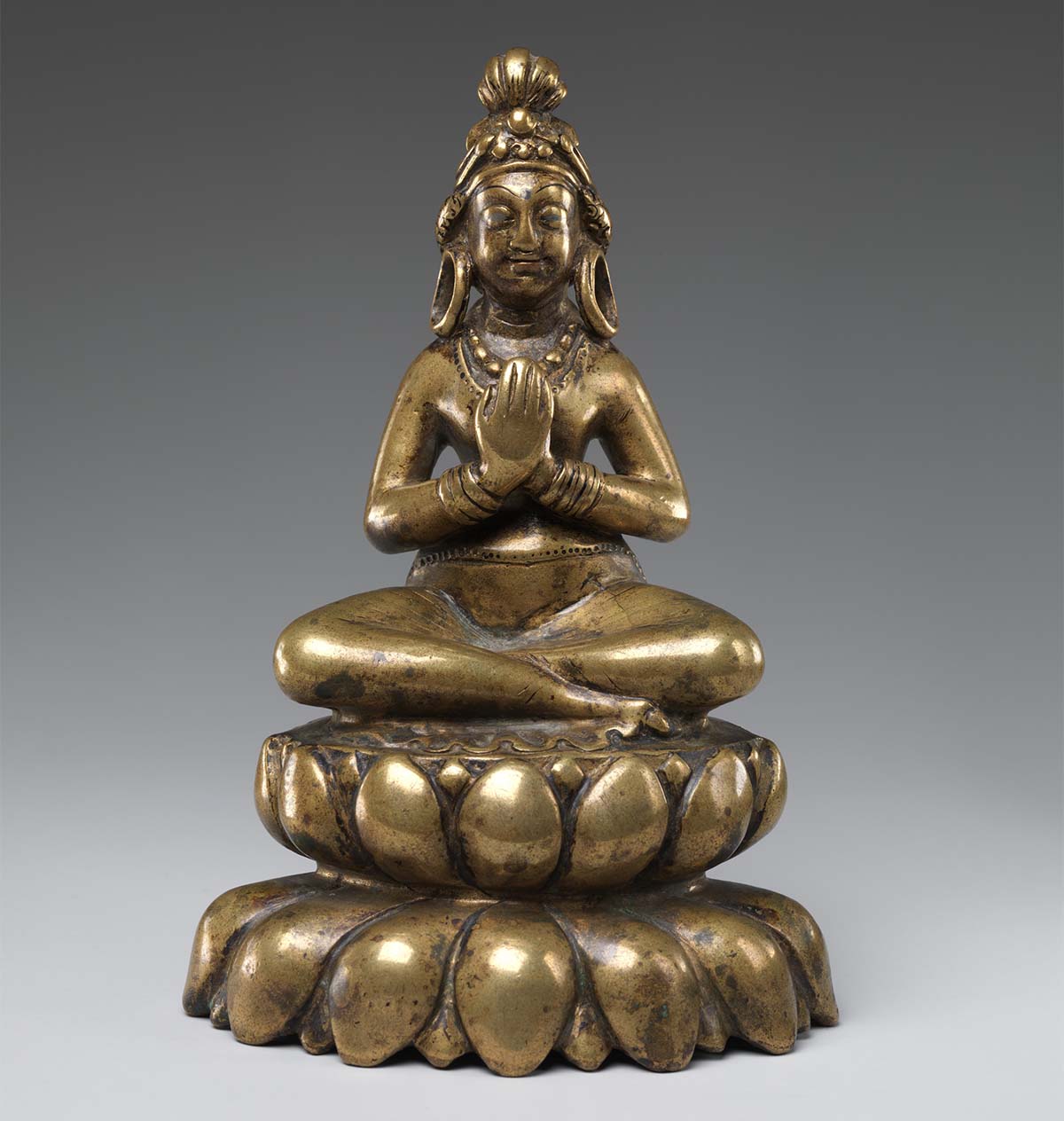ARTICLE
Anjali Mudra
A common mudra or sacred gesture in Buddhist and Hindu iconography and practice, the anjali mudra denotes reverence and devotion, and is also used as a salutation gesture. It is made by bringing the hands together in front of the chest with the fingers upright, and is named after the hollow formed between the palms in doing so. The thumbs are held against or close to the chest, either parallel to the fingers or pointed backwards. In Buddhism, the anjali mudra is particularly associated with the bodhisattva Avalokiteshvara.
In Buddhist art, figures such as bodhisattvas, kings and other devotees are shown assuming the anjali mudra as a mark of deep respect when they face the Buddha, who is rarely depicted making this gesture himself. In Hindu contexts, the anjali mudra may also represent humility and surrender; it typically accompanies the namaste or namaskar greeting or salutation, which holds various degrees of respect in everyday life.
Representations of the anjali mudra have been largely consistent in sculpture and painting in the Indian subcontinent since at least the first century BCE. One variation, which is seen in some sculptures, features the wrists twisted in such a way that the back of the right palm faces the viewer. In Vajrayana and other eastern forms of Buddhism, the anjali mudra of Shadakshari Lokeshvara, the four-armed Avalokiteshvara, is believed to conceal a gem — representing love and enlightenment — that is only visible to him. This is believed to represent the deeply personal nature of enlightenment, and its invisibility to those who only perceive the world in material terms.
Bibliography
Ables, Kelsey. “The Complex Meanings behind Hand Gestures in Buddhist Art.” Artsy, March 28, 2019. Accessed October 31, 2024. https://www.artsy.net/article/artsy-editorial-complex-meanings-hand-gestures-buddhist-art.
Beer, Robert. The Handbook of Tibetan Buddhist Symbols. Boulder, USA: Shambhala, 2003.
Huntington, Susan L. The Art of Ancient India: Buddhist, Hindu, Jain. New York: Weatherhill, 1985.
Metropolitan Museum of Art. “Manuscript Cover with the Bodhisattva Manjushri Flanked by Vajrapani and Avalokiteshvara.” Accessed December 3, 2021. https://www.metmuseum.org/art/collection/search/38423.
Metropolitan Museum of Art. “Tara.” Accessed December 3, 2021. https://www.metmuseum.org/art/collection/search/39343.









